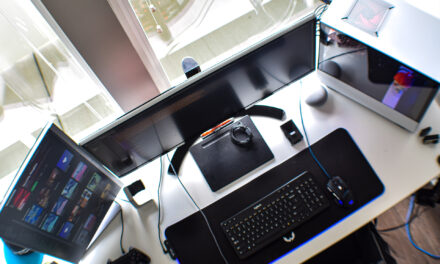Hey, friend! If you’re interested in breaking down a case study for a user experience project, I’ve got some great tips for you!
First, it’s important to define the problem that the project aims to solve. This involves researching and analyzing the current user experience, identifying pain points or areas for improvement, and defining the goals and objectives of the project.
Next, conduct research and analysis to gather data and insights about the user experience. This can include user interviews, surveys, user testing, competitive analysis, and other methods. Use these insights to generate ideas and concepts for the project and create prototypes or mockups to test and refine these ideas.
Once you’ve identified a design solution, implement it and test it thoroughly to ensure that it meets the project goals and objectives. Evaluate the effectiveness of the design solution using metrics such as user feedback, user satisfaction, task completion rates, and other relevant measures.
Based on the evaluation, make any necessary changes or refinements to the design solution and iterate the process as needed.
Let me give you an example case study to better illustrate this process. Let’s say you’re redesigning the navigation system of an automotive infotainment system. Here’s how you might break down the steps:
- Define the Problem: The current navigation system in the automotive infotainment system is difficult to use, and users have reported frustration with the system. The goal of the project is to redesign the navigation system to make it more user-friendly and efficient.
- Research and Analysis: Conduct user research to understand how users currently use the navigation system and identify pain points and areas for improvement. Analyze user data to identify common patterns and behaviors. Conduct competitive analysis to understand how other companies are addressing similar problems.
- Ideation and Prototyping: Generate ideas for the new navigation system and create prototypes to test and refine these ideas. Iterate on the design based on feedback from user testing.
- Implementation: Implement the chosen design solution and test it thoroughly to ensure that it meets the project goals and objectives. Ensure that the design is compatible with the automotive infotainment system.
- Evaluation: Evaluate the effectiveness of the new navigation system, using metrics such as user feedback, user satisfaction, task completion rates, and other relevant measures. Analyze the impact of the new design on the overall user experience of the infotainment system.
- Iteration: Based on the evaluation, make any necessary changes or refinements to the new navigation system, and iterate the process as needed.
The outcomes of this case study show that the new navigation system is more user-friendly and efficient, resulting in fewer user errors and increased satisfaction with the overall user experience. User feedback has been overwhelmingly positive, with users reporting that the new design is much easier to use and navigate. Task completion rates have increased, indicating that the new design has improved overall efficiency and productivity. The new design has been well-received by both users and stakeholders, leading to increased interest in the automotive infotainment system.
This case study would attract employers of a tech or automotive company looking for a UX or product designer. It demonstrates the candidate’s ability to conduct user research, analyze data, generate ideas, and implement effective design solutions that improve user experience and satisfaction. It also shows the candidate’s ability to work with complex systems and technologies and to collaborate with cross-functional teams to achieve project goals.
I hope this helps you understand the process of breaking down a case study for a user experience project! Let me know if you have any questions or want to chat more about it.






